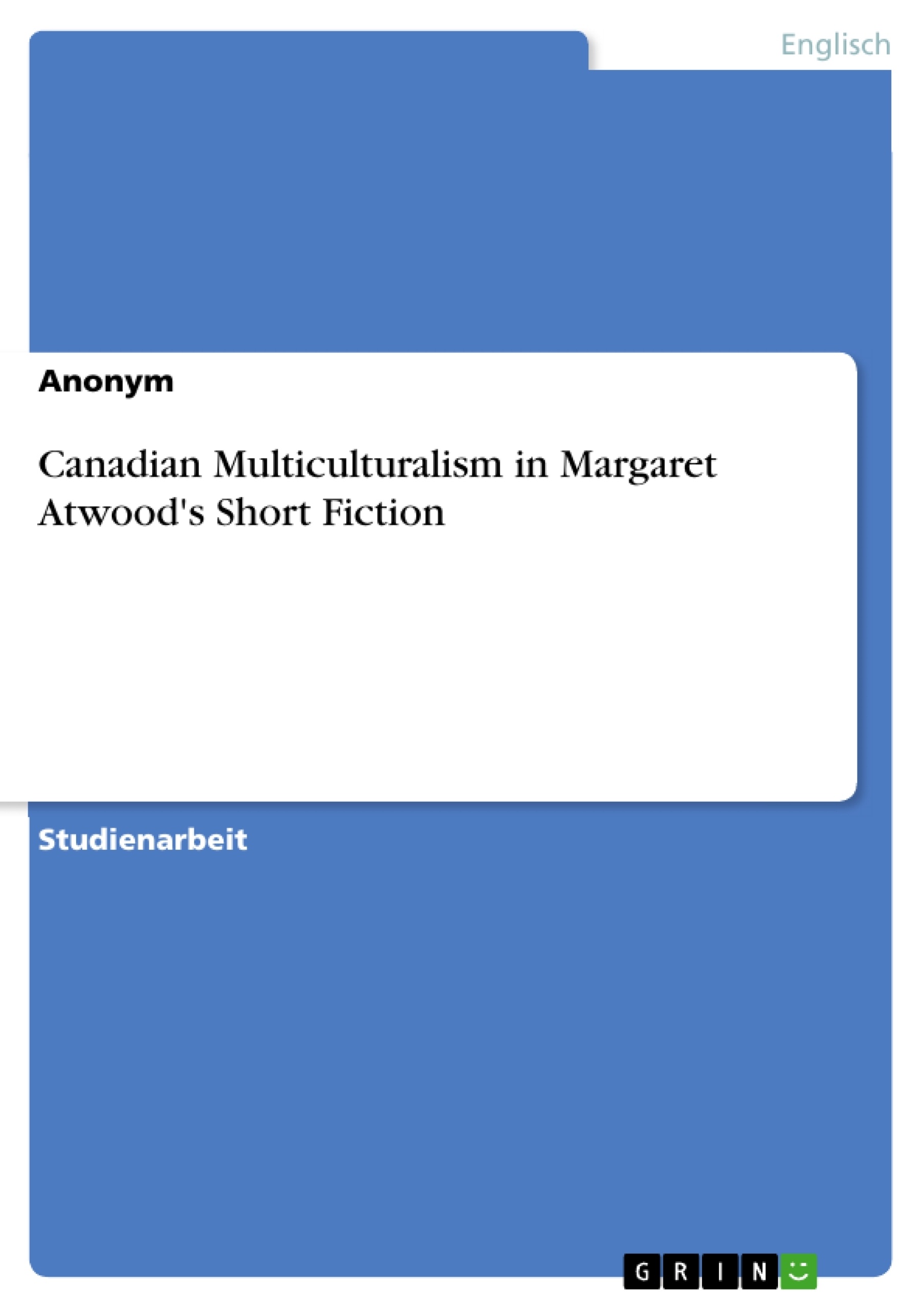In the following term paper, I will address aspects of Multiculturalism in Margaret Atwood’s Short Fiction. First, I will give a brief overview of the historical development as well as the political measures that were taken on Canada’s way from a bilingual to a multicultural nation. Secondly, I will analyze two of Atwood’s Short Stories, namely “The man from Mars” and “Dancing Girls” which were both published in the Short Story Collection “Dancing Girls and Other Stories” from 1982. I chose these particular Short Stories because they were written at earlier stages of the development of Multiculturalism, and also because they show two very different approaches on how to deal with intercultural contact on a day-to-day basis. During the second part of this term paper, I will give an analysis of the plot and the characters, and grasp the way Atwood portrays Multiculturalism in both Short Stories, respectively. Finally, I will summarize my findings and give a brief recapitulation.
Inhaltsverzeichnis
- INTRODUCTION
- THE DEVELOPMENT OF CANADIAN MULTICULTURALISM
- CANADIAN MULTICULTURALISM IN MARGARET ATWOOD'S SHORT FICTION
- THE MAN FROM MARS
- DANCING GIRLS
- CONCLUSION
Zielsetzung und Themenschwerpunkte
Diese Seminararbeit befasst sich mit der Darstellung von Multikulturalismus in Margaret Atwoods Kurzgeschichten. Die Arbeit analysiert die historische Entwicklung des kanadischen Multikulturalismus und untersucht, wie Atwood dieses Thema in zwei ihrer Kurzgeschichten - "The Man from Mars" und "Dancing Girls" - verarbeitet. Der Fokus liegt darauf, die unterschiedlichen Herangehensweisen an den interkulturellen Kontakt zu analysieren und die Art und Weise, wie Atwood den Multikulturalismus in ihren Geschichten porträtiert.
- Die historische Entwicklung des kanadischen Multikulturalismus
- Die Darstellung von Multikulturalismus in Atwoods Kurzgeschichten
- Die unterschiedlichen Herangehensweisen an den interkulturellen Kontakt in Atwoods Werken
- Die Rolle der Literatur im Verständnis des Multikulturalismus
- Die Relevanz von Margaret Atwoods Werk für das Verständnis von Kanada als multikultureller Nation
Zusammenfassung der Kapitel
Das erste Kapitel stellt die allgemeine Tendenz in Deutschland gegenüber der Idee einer multikulturellen Gesellschaft dar und führt den Leser in die kanadische Debatte zum Thema Multikulturalismus ein. Der Fokus liegt dabei auf der Rolle von Margaret Atwood als einflussreiche kanadische Autorin und der Relevanz ihrer Werke für die Auseinandersetzung mit dem Thema.
Kapitel zwei widmet sich der historischen Entwicklung des kanadischen Multikulturalismus, beginnend mit der Einwanderungswelle der Briten im 18. Jahrhundert bis hin zu den heutigen Integrationsbemühungen. Es werden die wichtigsten Meilensteine der Multikulturalismuspolitik in Kanada aufgezeigt und die Rolle des kanadischen Staates im Kontext der Förderung und Unterstützung verschiedener Kulturen innerhalb der Nation beleuchtet.
Schlüsselwörter
Die wichtigsten Schlüsselwörter und Fokusthemen dieser Arbeit sind: kanadischer Multikulturalismus, Margaret Atwood, Kurzgeschichten, "The Man from Mars", "Dancing Girls", interkultureller Kontakt, literarische Analyse, Integrationspolitik, gesellschaftliche Entwicklung.
- Quote paper
- Anonym (Author), 2017, Canadian Multiculturalism in Margaret Atwood's Short Fiction, Munich, GRIN Verlag, https://www.grin.com/document/1307358



